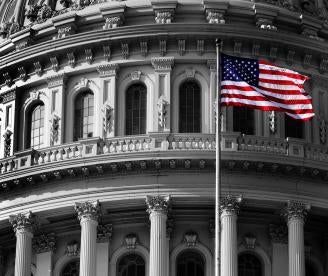On June 3, 2020, the Senate passed H.R. 7010 (previously passed by the House on May 28, 2020) entitled the Paycheck Protection Program Flexibility Act of 2020 (the “PPPFA”). Once signed into law by the President, the PPPFA will amend the CARES Act in several meaningful ways.
The highest profile change is to the definition of “covered period” which now shifts from 8 weeks from loan origination to the earlier of 24 weeks or December 31, 2020. This expands a borrower’s ability to maximize loan forgiveness. Importantly, however, a borrower receiving a covered date before the enactment of the PPPFA may still elect the original 8-week period, and its related obligation to maintain payroll levels only through June 30, 2020. Borrowers using the new covered period will be obligated to maintain payroll levels for an extra 16 weeks, all of which have the ability to impact loan forgiveness.
The PPPFA creates a new five-year minimum maturity date (again applicable only to post-enactment loans) and provides that nothing shall be construed to limit lenders and pre-enactment borrowers from mutually agreeing to modify the maturity terms to conform with this change.
The PPPFA also modifies the so called “75/25 Rule” to a “60/40 Rule” meaning up to 40% of the loan may now be spent on covered non-payroll costs (i.e., rent, mortgage interest and utilities) up from 25%. A borrower must now spend at least 60% of the loan on payroll costs, down from 75%.
The PPPFA creates a new forgiveness exemption based on employee availability during the period from February 15, 2020 through December 31, 2020. Loan forgiveness will be determined without regard to a proportional reduction in the number of FTEs if a borrower in good faith documents both the inability to rehire individuals who were employees on February 15, 2020 and the inability to hire similarly qualified employees for unfilled positions on or before December 31, 2020. Or a borrower in good faith is able to document the inability to return to the same level of business activity at which the borrower operated at or before February 15, 2020, due to compliance with requirements established or guidance issued by DHHS, CDC or OSHA from March 1, 2020 through December 31, 2020, related to the maintenance of standards for sanitation, social distancing, or any other worker or customer safety requirement related to COVID-19.
The PPPFA also extends the existing 6-month loan payment deferral period until the date on which the amount of forgiveness determined is remitted to the lender. If a borrower fails to apply for forgiveness within 10 months of the last day of the covered period, payments of principal, interest, and fees will begin on the day which is not earlier than the date that is 10 months after the last day of such covered period.
Finally, the PPPFA now permits borrowers to delay the payment of employer payroll taxes until December 31, 2021 (with respect to up to 50% of the amounts due) and December 31, 2022 (with respect to the remaining amounts due up to 50%). Borrowers were previously prohibited from this benefit if their loans were forgiven in whole or in part.
On balance, the PPPFA contains some useful changes for every borrower, although certain businesses will derive more benefit than others. As with prior changes to the PPP, borrowers should expect the SBA, in consultation with the Treasury Department, to provide further guidance with answers to frequently asked questions and further regulations with interim final rules. For now, let’s just give thanks for the additional flexibility.




 i
i


